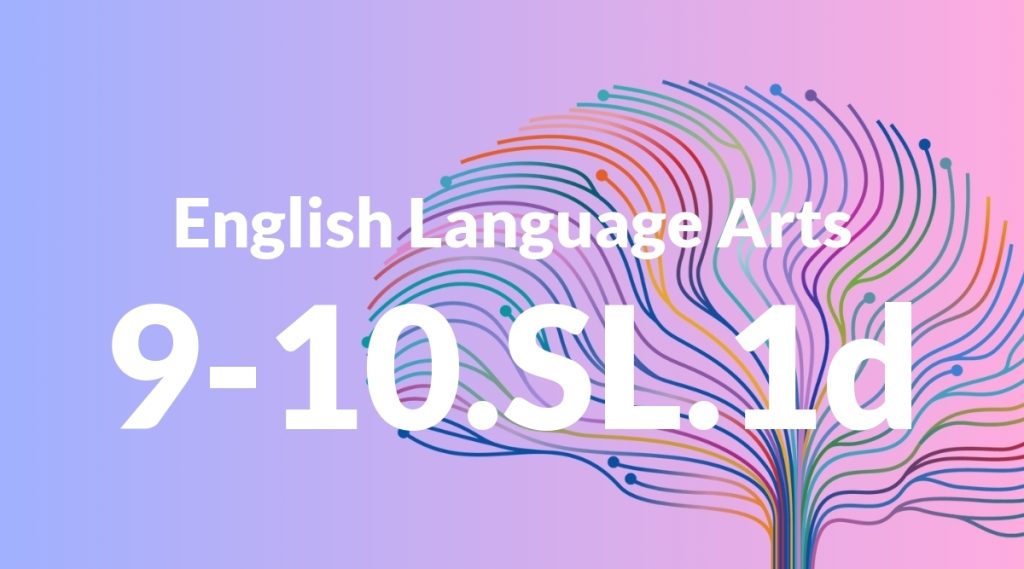Standard: 9-10.SL.1d – Respond thoughtfully to diverse perspectives, summarize points of agreement and disagreement, and, when warranted, qualify or justify their own views and understanding and make new connections in light of the evidence and reasoning presented.
Grade level: Grade 9-10
Subject: English Language Arts
Domain: Speaking & Listening
Teacher Overview
This standard emphasizes the importance of engaging with diverse perspectives in meaningful ways. It requires students to not only listen and comprehend different viewpoints but also to thoughtfully respond, summarize, and connect these perspectives to their own understanding. This skill is crucial for developing critical thinking and effective communication, which are essential in both academic and real-world settings. Students should already know how to actively listen, take notes, and articulate their own viewpoints respectfully. They should also understand the basics of summarizing information and identifying key points in a discussion.
Mastering this standard will enable students to engage in more sophisticated discussions, where they can critically evaluate different viewpoints and articulate their own positions clearly and persuasively.
Common Misconception 1
A common misconception is that students believe they must agree with others to respond thoughtfully. This is incorrect because thoughtful responses can include respectful disagreement, provided they are supported by evidence and reasoned arguments.
Intervention 1
An effective intervention is to conduct role-playing activities where students practice disagreeing respectfully and presenting evidence-based counterarguments. This helps them understand that thoughtful engagement involves critical evaluation, not just agreement.
Common Misconception 2
Another misconception is that summarizing points of agreement and disagreement is the same as restating what was said. This is incorrect because summarizing involves distilling the main ideas and key points, rather than repeating everything verbatim.
Intervention 2
To address this, teachers can use graphic organizers that help students identify and differentiate between main ideas and supporting details. This visual aid can reinforce the concept of summarizing effectively.
Prerequisite Knowledge
Students should have a basic understanding of how to listen actively, take notes during discussions, and articulate their own viewpoints respectfully.
Subsequent Knowledge
Students will develop advanced skills in critical thinking, persuasive communication, and the ability to synthesize complex ideas from multiple sources.
Instructional Activities
- Organize class debates on current events or controversial topics to practice thoughtful responses.
- Conduct group discussions on diverse viewpoints presented in literature or media.
- Set up peer review sessions where students provide feedback on each other’s work, focusing on summarizing points of agreement and disagreement.
- Use case studies to analyze and discuss different perspectives and their implications.




